Isn't She Beautiful?
Medellin Is A Stunningly Green City
And no… this is unrelated to the ubiquity of Atletico Nacional T-shirts!
By Kaveh Paymayesh

Isn’t it beautiful, the Aburra Valley? All those that enter have the celestial experience of seeing it from above as they descend into the city.
It’s enchanting. I’m convinced there’s nothing that can prepare you for it – not even those crisp 4k videos that you may have been watching…
One of Medellin’s criminally overlooked assets is its natural (green) beauty. Subliminally, it draws us in. I believe it’s how the city casts its spell on us.
Why do people fall in love with Medellin? We already know that it’s the people, the culture, the weather. Nonetheless, why aren’t we giving due credit to the landscape, the biology, the flora & fauna?
Why is greenery important for cities?
For me, it’s simple:
We are humans. No matter how far we’ve come as a species, we will forever belong to and need our Mother Nature.
Just like anything else living on this planet, we’re supposed to be immersed in the natural world. When we’re not, things can go south, quickly.
And yet, an ever-growing percentage of us are now living in cities. The consequences on mental & physical health speak for themselves! It’s so bad that they even coined a term for it – psychoterratic.
Here’s a study if you’d like to know more about the consequences of nature deprivation.
Whether we realize it or not, we need green spaces.
(Even more so in Latin America where 85% of the population now lives in cities.)
A UK meta-study found that urban forests and access to green spaces are associated with:
- Long-term physical benefits (such as reduced obesity & general mortality)
- Short-term physical benefits (lowered blood pressure, heart rate)
- Improvements to mental wellbeing.
Furthermore, green spaces don’t only impact us profoundly; they do so subtly. Oftentimes, we don’t realize how valuable they are.
For me, it was an ‘AH-HA’ moment. Only upon wondering the often sterile streets of Bogota was I able to register and appreciate the lushness of Medellin. Of course, there are treeless streets in Medellin but less so than in the capital.
The canopy of El Poblado
As the foreign footprint increases within the city, I hear more sneering remarks about how El Poblado is too ‘gringo-fied’. I get the impression that it’s not cool to be in Poblado. Almost as if it were a place relegated for the clueless tourists.
“Experience the real Medellin”, they say…
Ouch. But no.
El Poblado has a whole lot going for it, hence why it’s so attractive. By far, one of my favourite things about the place is its natural charm.
When you think of a city in the tropics or a city in the 2nd most biodiverse country on the planet, what are your expectations? What should an ideal urban landscape look like in the tropics?
For me now, I think of El Poblado.
Just watch some drone videos. You’ll see that large swathes of the district are hidden under extensive, tropical canopies.
Medellin allows you to enjoy the perks of being in a city but constantly reminds you of where you are – in the tropics. Nowhere else pulls it off quite like Medellin does.
Big statement? Just look below!
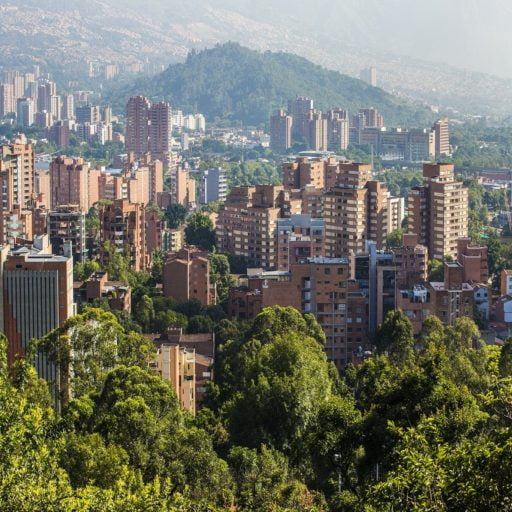
Excellent urban design
Let’s take a minute to appreciate urban design… Look at this satellite view of El Poblado. Despite being one of the most populous districts in the city, it is the least grey and most green.
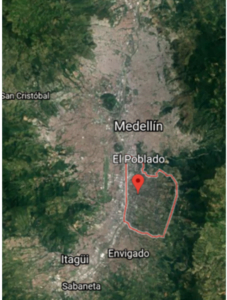
Compared to the rest of the city, El Poblado appears much greener from above, almost as if it were ‘undeveloped’.
That’s no accident! The green-pristine appearance of the comuna is a result of thoughtful urban planning. It’s a place where urban landscapes converge with lush terrain, allowing both to flourish concurrently.
In many cities, there is a dichotomy between green and grey. If greenery is what you want, you may have to travel somewhere like a park to find it. In Medellin however, this separation does not exist. Most streets are replete with foliage and shade-giving trees.
It’s what makes Medellin one of the most beautiful urban landscapes on Earth.
Also, I’d like to address a common concern; “they keep knocking down trees for land development”.
Did you know that Medellin has more trees now than it did 50 years ago?
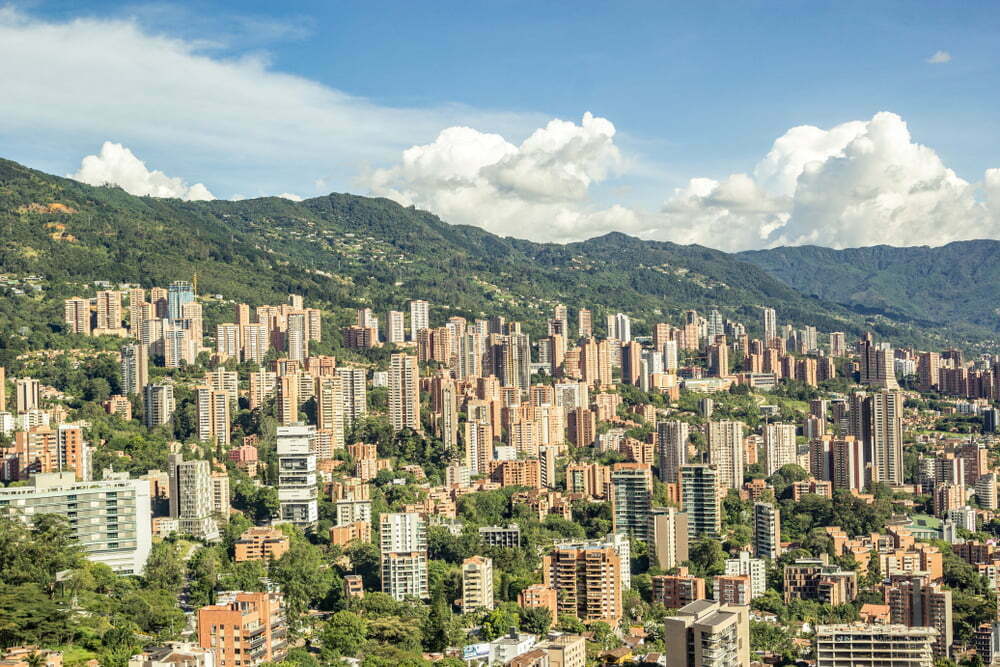
Note how you can’t spot any roads in the photo? That’s because they’re covered under a thick canopy of tropical trees, many of which are endemic to and only found in Colombia.
The expansion of green corridors
It’s not all rainbows and roses (though there are plenty). Medellin has some serious environmental issues, mainly air pollution & a warming climate. What I love though is that the city is making concerted efforts to contend with them.
Have you heard of Medellin’s “Green Corridors”?
What are they? Well, they’re corridors that have been cleverly designed to mimic the layers of a forest. By incorporating a combination of small, medium & large flora, the benefit to wildlife has been maximized.
Yet that isn’t the sole motive for these crafty corridors. Temperatures have dropped 2-3°C in implemented areas! They also help to sequester carbon dioxide and filter harmful gases from the air. It’s all part of the city’s ambitious plans to become an Ecocity.
By 2019, Medellin tallied a total of 30 different green corridors – along 18 roads and 12 waterways! We’re talking about 8,300 trees & 350,000 shrubs. The city replaced over 2 hectares of concrete with bioactive corridors. The most prominent example is in Avenida Oriental – a highly congested and polluted road in El Centro.
Oh, and the coolest part is that disadvantaged citizens are trained as gardeners to maintain these green zones. So yeah, the dividends are economic, social and ecological.
So does it surprise you that this scheme has garnered international praise? The city even won a title for its impact.
Hey, I wouldn’t expect anything less from 2013’s most innovative city.

Can't forget the parks
like anywhere else, parks play an important role within Colombian society. Although, urban parks are unique in Colombia.
In the UK, we also have parks. Plenty of them! But they are often devoid of the social interaction that we see in Colombian urban parks.
In Medellin, they are social places; a setting for recreation, interaction and tranquillity. However, did you know that they are also indicators of life quality?
Those that don’t have good access to them experience reduced well-being & health.
Unfortunately, Colombian parks are susceptible to social degeneration. Many are hotspots for drug use & other nasty activities. This is obvious throughout El Centro.
Investing in the parks
Now that we’ve mentioned the value of urban parks in society, I’d love to highlight an act of TLC by ex-mayor, Federico Gutierrez.
By the end of 2019, the city met its goal of transforming 100 parks. Another 592 were maintained. This entailed the installation of proper infrastructure in addition to planting trees and shrubbery. The total expenditure was around $315,000.
The work didn’t stop there. Since 2019, many more parks have been renovated to improve the state of fauna & flora and promote social wellbeing. Notable examples include the Primer & Segundo parques de Laureles and Parque El Poblado. They even created a new park in Prado.
While this list is not exhaustive, let’s not forget about the upgrade provided to Cerro Nutibara (otherwise known as the hill of Pueblito Paisa). There they created a new cycle path whilst planting a heck ton of new trees and plants.
These gestures are not just good for people. They’re an effective way to illustrate the importance of ecology in our lives.
A final word on the urban parks
Yes – the Aburra Valley is packed with urban parks, but they are not the only places where you’ll find an ecological presence.
You’ll find trees everywhere, hear birds on every corner. Walking to your local shops? There’s a good chance you’ll be under the canopy of a couple of majestic trees.
Now THAT is what makes us humans feel good! It’s what lifts our spirits, makes us feel warmer!
That alone makes me crave out Medellin anytime I leave.
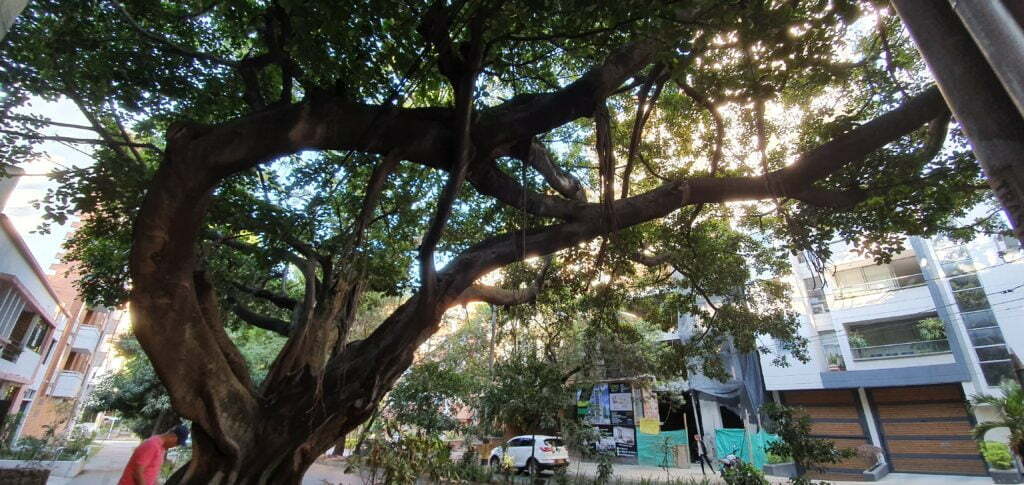
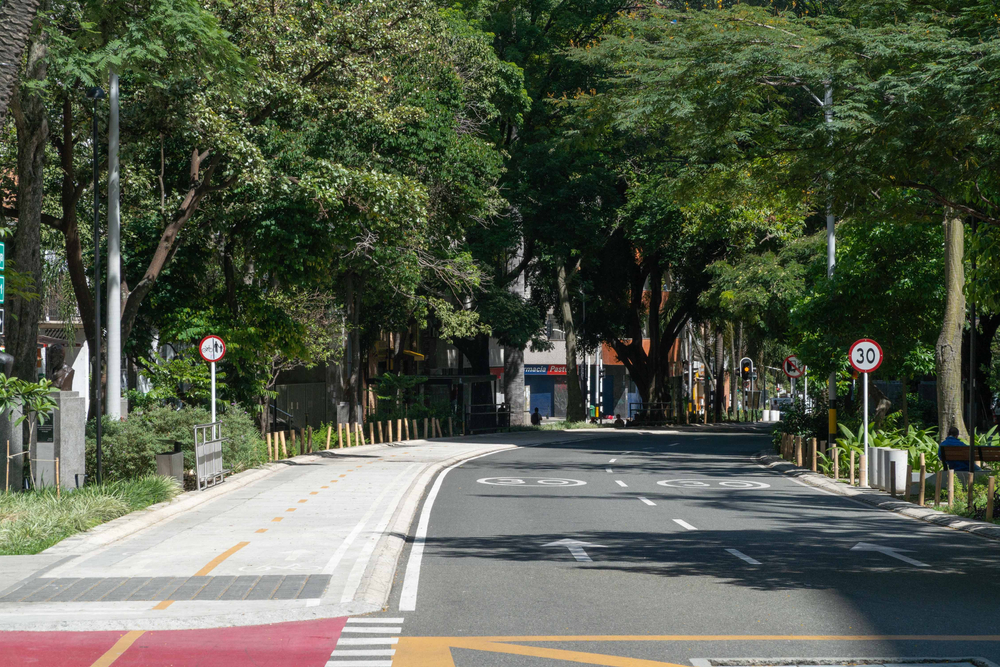
Local reserves / green belt
The Medellin Metropolitan Area is brimming with green spaces. Over 213 hectares of land in the Aburra Valley are officially protected. This number is going up – 12.54 hectares of land were added to the list in 2019.
If you wish to flee from the madness of the city, you’re spoilt for choice.
Here’s a list of some spectacular green zones:
El Alto de San Miguel
Declared an ecological reserve in 1993 and located 30 minutes from Poblado. The heights of San Miguel are where the Medellin River begins its journey through the Aburra Valley.
Ecologists have recorded 240 different species of birds, making it a paradise for bird-watchers.
This reserve is home to 15% of Colombia’s biodiversity – the 2nd most biodiverse country in the world.
Wow!
El humedal Ditaires
Added to the valley’s growing list of protected areas in 2019. It’s located in the bustling municipality of Itagüí.
The reserve spans 12.54 hectares. Ecologists have detected 173 species of flora and over 70 species of birds. It also has 2 water streams.
The craziest thing about this place is that it’s in Itagüí – a hectic and industrial municipality.
Talk about an oasis!
La Romera
La Romera provides Sabaneta with its main source of water. Combined with its ecological diversity, you have one of the most important natural ecosystems in the Aburra Valley.
In La Romera you can find:
- 28 different mammal species
- 168 bird species
- 8 amphibian/reptile species
- 225-230 different plant species.
Not bad for an area of 200 hectares.
El humedal Ditaires
Watch this video. Ain’t it pretty?
Parque Arví
The most touristic eco-park in the Medellin area. Almost as iconic as the park itself is the cable car used to get there. Parque Arvi provides a great day out is located on the eastern slopes of the valley.
The reserve boasts a whopping 16,000 hectares of forest and over 50 different trails to explore.
Did you know that the greenery of Parque Arvi is visible from space?
Another cool fact is that much of the reserve was planted with non-native fauna, something that the Corporación Parque Arví is slowly reversing.
Something to appreciate
Remember that under the tropical sun, altitude is what determines local climate.
Hence, no 2 green spaces are the same, even though they are in the same valley.
At the basin, 2500m above sea level, things are a lot more tropical.
Up at the higher altitude fringes of the valley, things cool off. The flora changes.
For example, you’ll see more pines, which are able to thrive in the temperate climate.
All this diversity in one valley. It’s phenomenal.
How many people that come to Medellin actually know this?
{“Knowledge is wealth, wisdom is treasure, understanding is riches, and ignorance is poverty.”}
-Somebody more eloquent than me
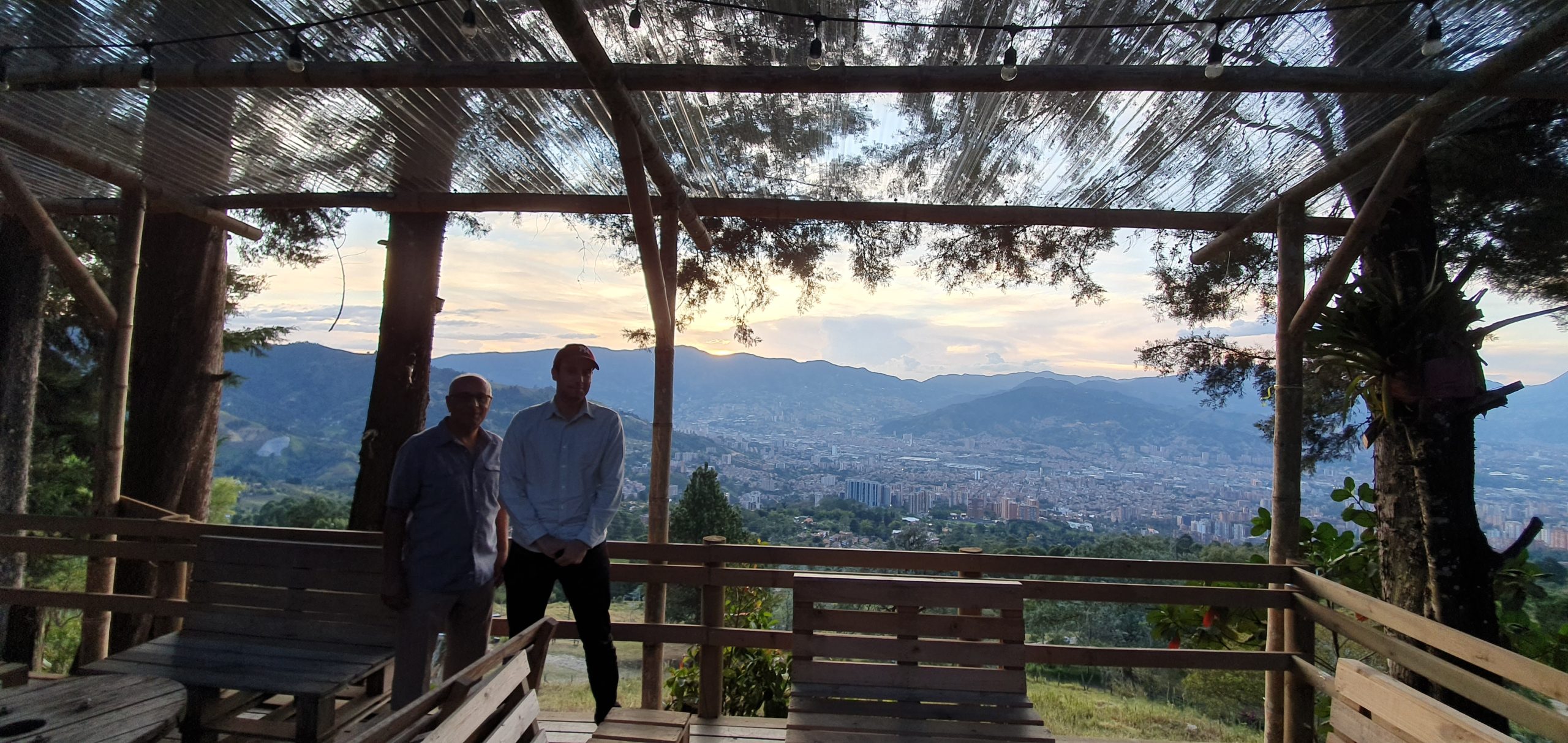
It wasn't always so green!
Normally, we associate urban expansion with the destruction of its own green spaces. In other words, as a city grows so too does the expanse of land hacked down in its path…
Why do we have this presumption? With good reason; in just 6 six years in the UK, over 22,000 hectares of green space were paved over in the name of ‘land development’. I’ve seen it in my own city. The ugly side of urbanization.
Medellin is different!
Most people are unaware that at the turn of the 20th century, Medellin was a hub for cattle-ranching and agriculture. In case you didn’t know, these two activities are very harmful to the environment and leave their mark on the landscape.
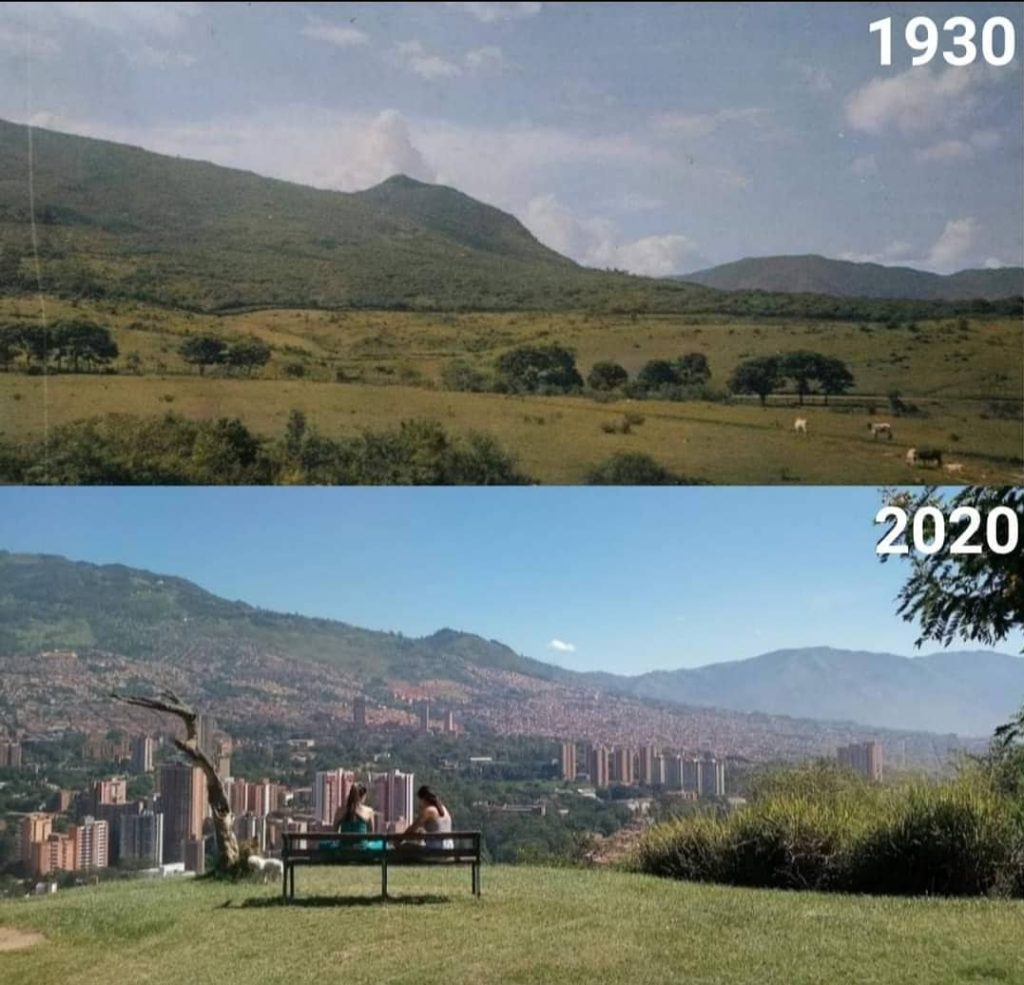
Did you know that the Aburrá Valley was once deprived of trees?
This was especially true in the basin of the valley which had ideal topography for livestock. The above photo illustrates.
So, when people say that Medellin continues to become more devoid of trees, they haven’t done their homework!
Through the 20th century, Medellin rapidly shifted from an agricultural landscape to an urban one. Sadly, the biosphere didn’t benefit. Trees? Urban forests? They weren’t in fashion at the time.
The desert-like fields that once predominated the valley were paved over to make way for urbanisation. The terrain remained sparse in vegetation.
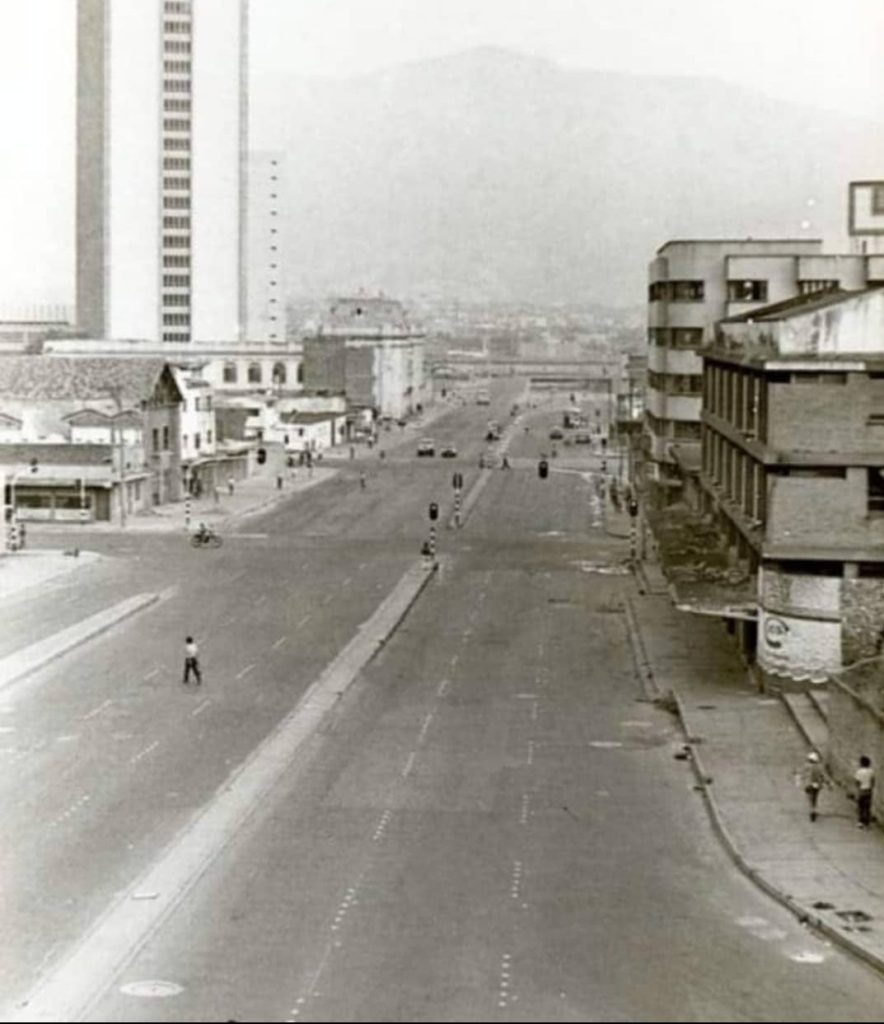
The cows may have gone, but they were quickly replaced by concrete.
Back in the day, it was fashionable to sterilize the landscape of its greenery. The remaining isolated spots of greenery had receded into the various parks. Outside of them? Gray.
Even worse was that it was popular to plant non-native trees.
But as is always the case with fashion, the public sentiment changed.
It’s 2022 and Medellin now endeavours to be an “Ecociudad” (Ecocity). It looks like they are taking biological diversity seriously. A good idea given the current state of the affairs on this planet.
Furthermore, hello?! Colombia is the 2nd most biodiverse country on it. Why not play that to their advantage? Capitalize on it!
Flaunt what you got.
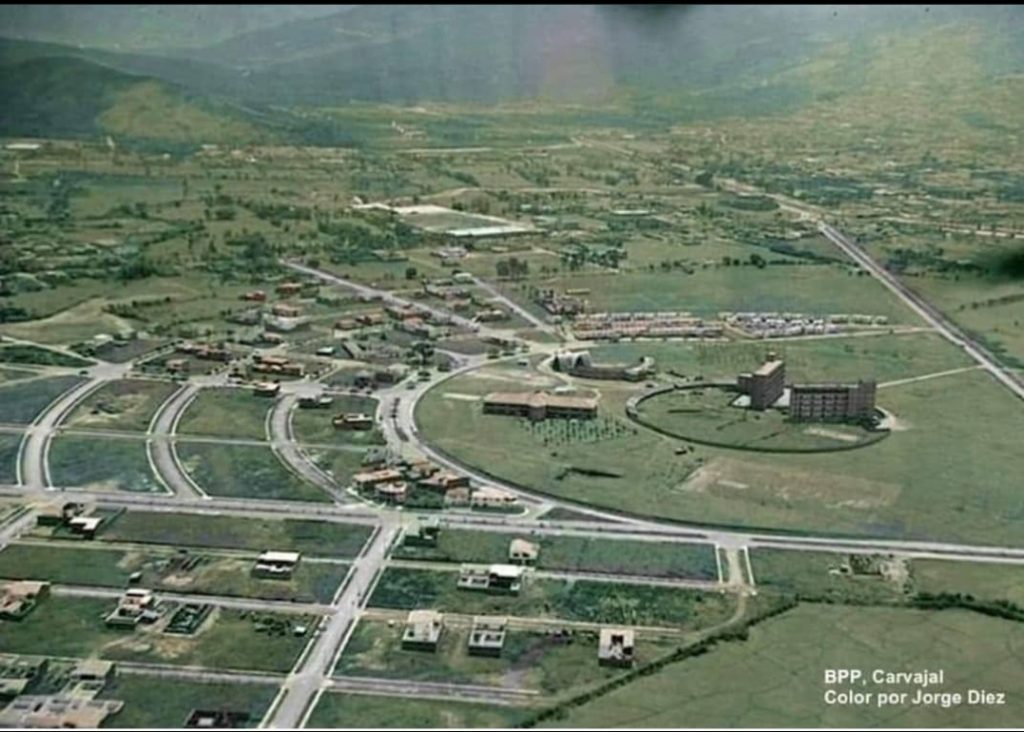
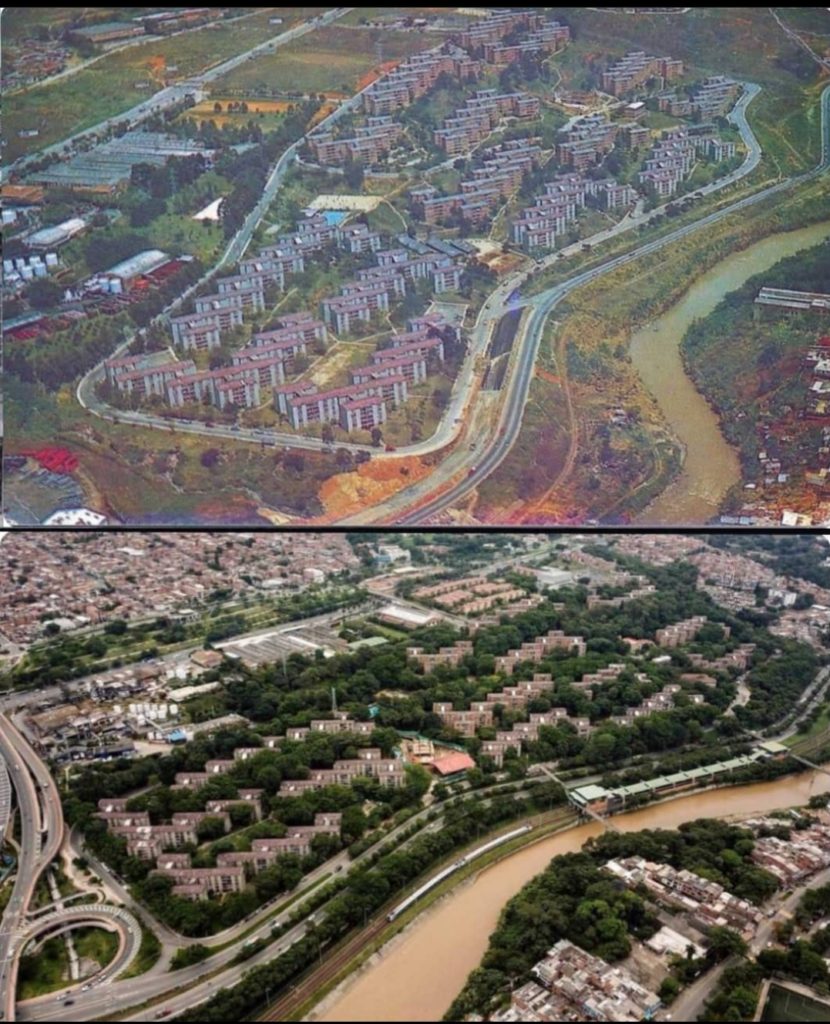
Facebook
Twitter
LinkedIn
Reddit